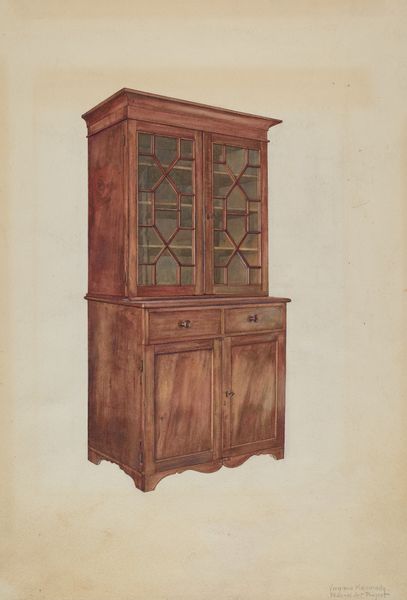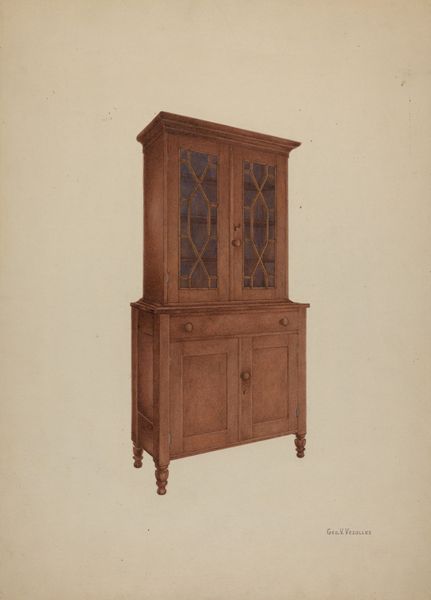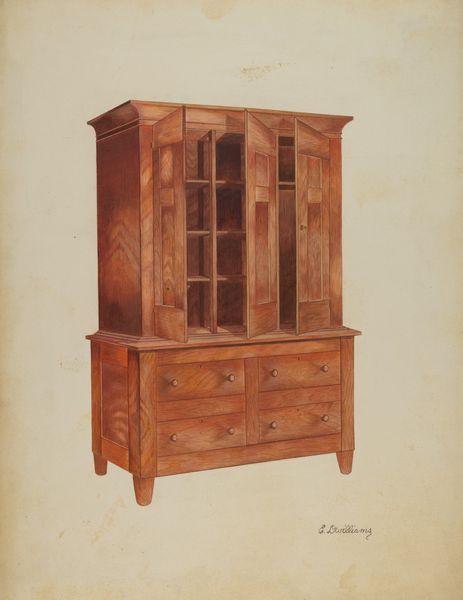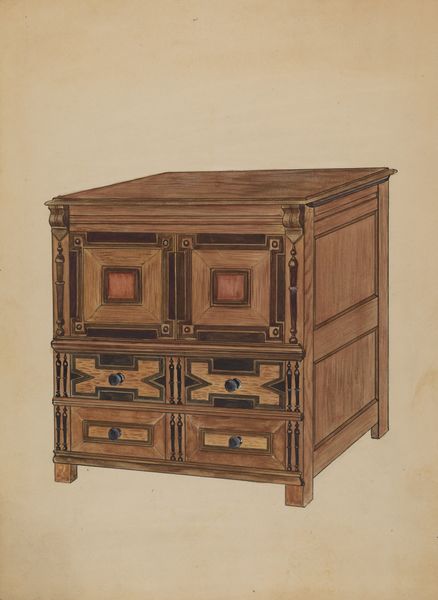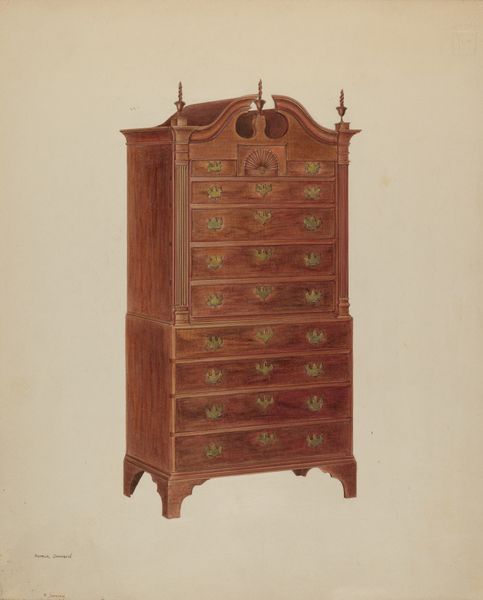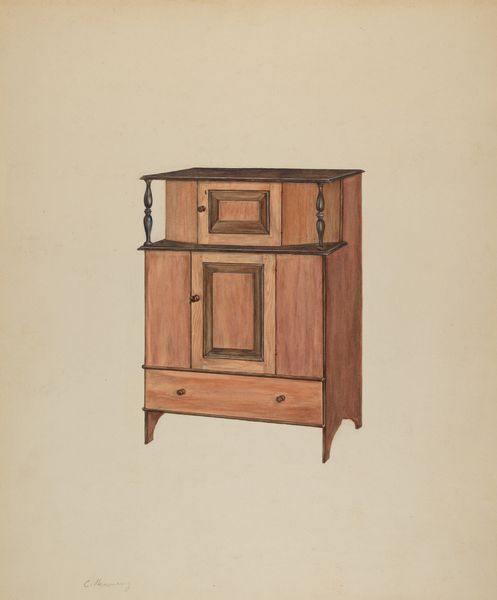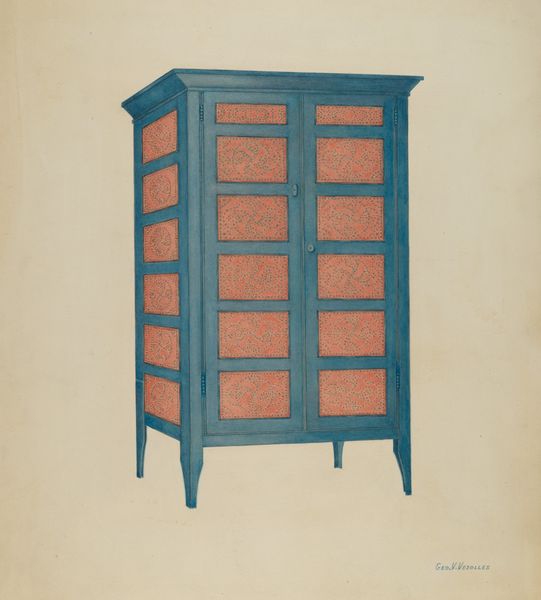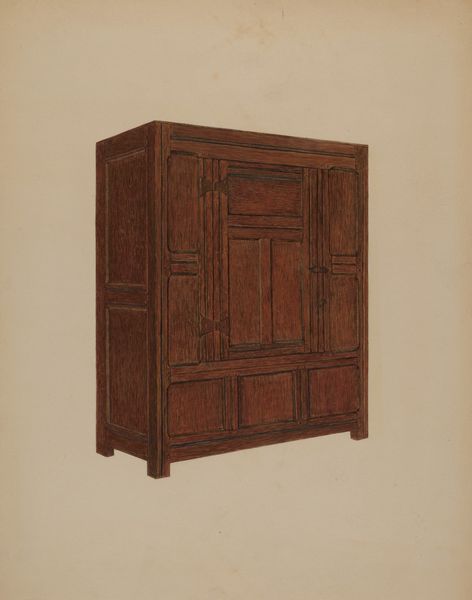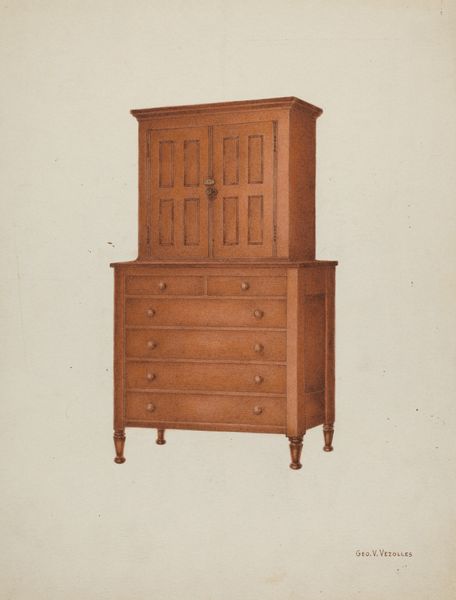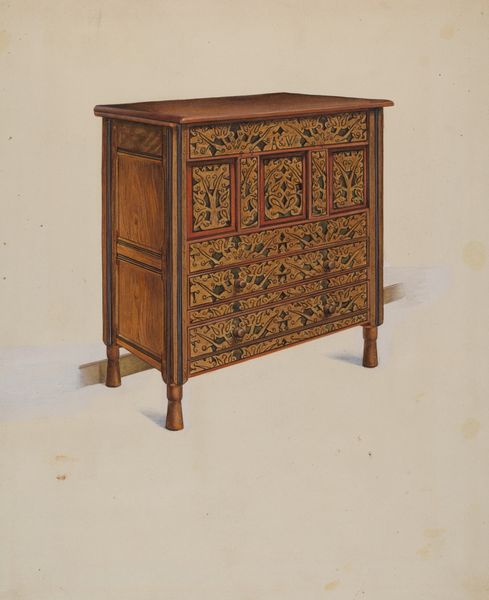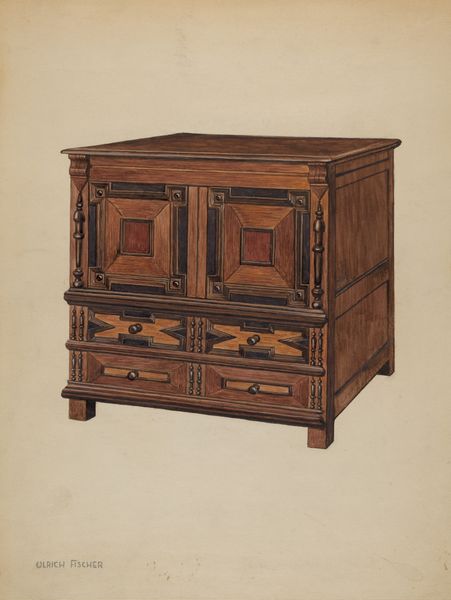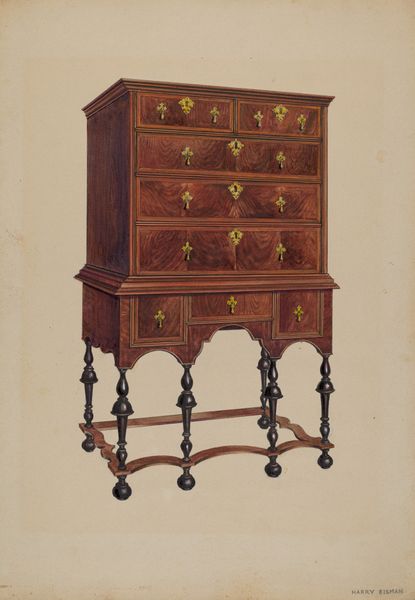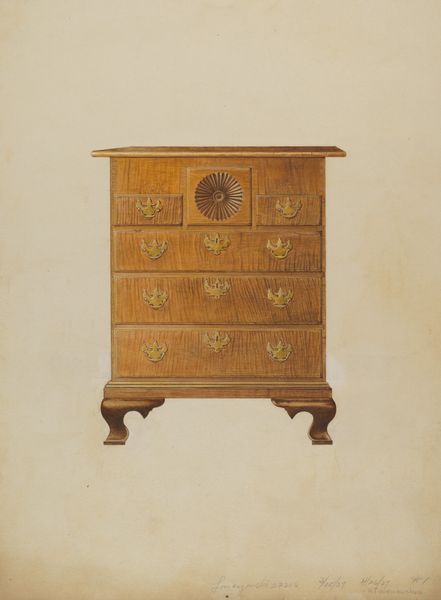
drawing, paper, pencil
#
drawing
#
furniture
#
paper
#
pencil
#
regionalism
#
watercolor
Dimensions: overall: 41 x 30.9 cm (16 1/8 x 12 3/16 in.)
Copyright: National Gallery of Art: CC0 1.0
Editor: This drawing, "Shaker Tin Safe" made around 1939 by George V. Vezolles using pencil and paper, presents this familiar, humble object, and yet, the geometric arrangements in it almost make it feel like a fortress, a site of some special purpose. How do you interpret this work? Curator: Indeed. The Shaker aesthetic, with its emphasis on simplicity and functionality, is rich with symbolic intent. This ‘safe,’ visualized through a somewhat austere composition, brings up a sense of the sacred. The repetitive patterns in the tin panels—almost like mandalas—could represent order and spirituality, essential elements within Shaker beliefs. Do you sense a visual tension between utility and a higher calling here? Editor: I see what you mean. The artist uses these basic shapes to suggest more than just storage, creating almost an emblem. The choice to depict a safe is striking too. Curator: Exactly. What might a 'safe' mean beyond its practical use? It may suggest the preservation of Shaker values, or a safe haven for their beliefs during a time of modernization. The safe becomes a powerful emblem. Look how light seems to be trapped within those tiny perforations, those little universes. The act of meticulously rendering each detail speaks volumes. It’s less about the object and more about the ideas and culture that it embodies. Editor: It's like Vezolles elevated a common object to represent broader concepts like community and faith. It’s amazing to think about the symbols we place within the items of our daily life! Curator: Precisely, and the persistence of those symbols through material culture continues to shape our own understanding of identity. These objects are not passive; they speak.
Comments
No comments
Be the first to comment and join the conversation on the ultimate creative platform.
